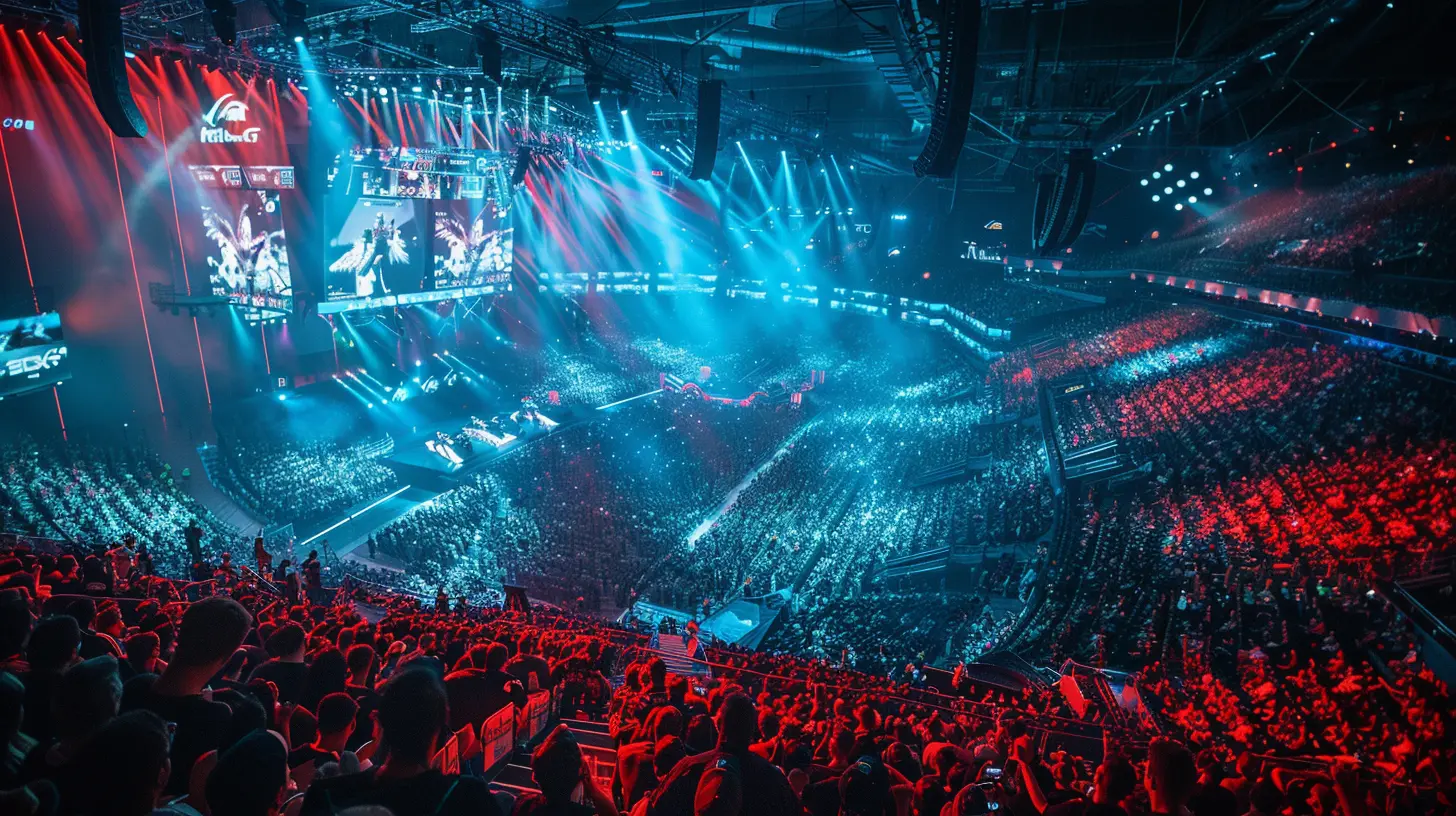The Future of E-Sports: Trends to Watch in Competitive Gaming
7 August 2025
If you've been paying any attention to gaming in the last decade, you’ve probably noticed e-sports (short for electronic sports) taking on a life of its own. It's no longer just friends gathering in a dimly lit basement to settle scores in “Call of Duty” or “League of Legends.” Nope—e-sports is a massive global phenomenon. Think sold-out arenas, millions of livestream viewers, and prize pools worth more than most people's yearly salaries—and we’re just scratching the surface here.
But what does the future of e-sports hold? What’s next for this electrifying industry that’s constantly reinventing itself? Well, buckle up, because this ride is about to get wild. From technological innovations to cultural shifts, we’re diving deep into the trends shaping the future of competitive gaming.
The Rise of Mobile E-Sports: Gaming on the Go
Here’s the thing: not everyone has a high-end gaming PC or a next-gen console, but almost everyone has a smartphone. That’s why mobile gaming is blowing up in ways we couldn’t have predicted a few years ago. Competitive games like “PUBG Mobile,” “Free Fire,” and “Mobile Legends” are already dominating the scene, especially in countries like India, Brazil, and Southeast Asia, where mobile-first gaming communities are thriving.Why is this happening? Accessibility. Mobile gaming makes e-sports ridiculously easy to access. You don’t need thousands of dollars’ worth of gear—you just need a phone and a stable internet connection. Plus, developers are pushing out updates and events faster than ever, keeping players engaged and tournaments fresh.
Looking forward, expect mobile e-sports to continue leveling up. Game developers are investing heavily in making mobile titles that can rival their PC and console counterparts, and with 5G networks becoming standard, smoother gameplay is all but guaranteed.
Virtual Reality (VR) and Augmented Reality (AR): The Next Big Thing?
Alright, let’s talk about the sci-fi stuff: VR and AR. These technologies have been hovering around the gaming industry for a while, but they’re finally starting to find their footing in the e-sports world. Imagine stepping into an immersive 360-degree battlefield or having your living room turned into a Pokémon arena—sounds cool, right? And it’s not as far-fetched as it seems.Games like “Echo Arena” are showing us what’s possible when VR meets competitive gaming, and platforms like ARKit and ARCore are making it easier for developers to create AR experiences. While VR e-sports are still niche, the potential is massive. As VR headsets become more affordable and lightweight, we’ll likely see an uptick in competitive VR leagues.
Of course, there are hurdles—motion sickness, cost, and tech limitations, to name a few. But if these challenges are overcome, VR and AR could redefine what it means to compete in gaming.
The Power of AI in E-Sports: Smarter Gaming
Artificial intelligence (AI) isn’t just for self-driving cars and creepy robots—it’s also shaking things up in e-sports. AI is already being used for better matchmaking, more realistic non-player characters (NPCs), and personalized coaching systems that help players improve their skills.But here’s the kicker: AI is starting to play a bigger role in broadcasting and analytics. Picture this—AI-driven tools that analyze gameplay in real time and provide casters with instant insights they can share with the audience. This adds a whole new layer of depth to e-sports commentary. It's like having a sports analyst who never misses a single play.
In the future, AI could even help detect cheating more effectively or create training simulations tailored to a player’s unique strengths and weaknesses. It’s like having a personal coach who never sleeps or snacks on chips mid-session.
Regional Expansion: E-Sports is Going Global
E-sports used to be dominated by a few regions—South Korea, China, and North America being the big ones. But now? Competitive gaming is spreading faster than memes on Twitter. Events in regions like the Middle East, Africa, and South America are taking off, with local games and tournaments spotlighting homegrown talent.And let’s not forget about language diversity. Streaming platforms like Twitch and YouTube Gaming are catering to a broader audience by integrating multiple languages directly into broadcasts. This means that a kid in Nairobi or Riyadh can tune in and fully immerse themselves in the action, no matter where the tournament is being held.
This global shift isn’t just good for viewership—it’s good for business, too. More regions mean more sponsors, more investments, and ultimately, more players. The future of e-sports is looking less regional and more universal, which is a win for everyone.
The Role of Blockchain and NFTs: A New Type of Ownership?
Brace yourselves: Web3 is coming for e-sports. Blockchain technology and NFTs (non-fungible tokens) are starting to pop up in competitive gaming, and the possibilities are... polarizing, to say the least.Here’s the idea: NFTs could let players own in-game assets like unique skins, weapons, or even collectibles tied to their favorite teams or events. On the competitive side, blockchain could make tournament prize payouts faster and more transparent, which, let’s be honest, is a needed improvement. Plus, NFTs could open new revenue streams for players and teams, as they could sell or trade virtual items directly to fans.
That said, this is not without controversy. Critics argue that blockchain tech is still too experimental and energy-intensive, and there’s definitely skepticism about whether NFT-based economies will stick around long term. But love it or hate it, blockchain is something to keep an eye on in the ever-evolving e-sports landscape.
Cross-Pollination with Traditional Sports: The Hybrid Future
Ever noticed how traditional sports leagues like the NBA, NFL, and Formula 1 are jumping headfirst into e-sports? Whether it’s launching their own gaming leagues or collaborating with developers, the line between traditional sports and e-sports is blurring.For example, FIFA has its own global e-sports tournaments for soccer fans, and the F1 Esports Series lets racing enthusiasts compete in virtual Grand Prix. Even beyond that, athletes like LeBron James and David Beckham are investing in e-sports teams, giving the industry some serious star power.
In the future, expect even more crossover events and partnerships. Traditional sports organizations are realizing that gaming gives them access to a younger, tech-savvy audience, while e-sports gains a level of legitimacy by borrowing from the playbook of well-established sports.
Sustainability in E-Sports: Will Green Gaming Be a Thing?
Let’s not ignore the environmental impact here. Big e-sports events are energy-intensive, from livestreaming to the massive carbon footprint of physical tournaments. In a world that cares more and more about sustainability, the e-sports industry is starting to face pressure to “go green.”We might see eco-friendly arenas, carbon-neutral livestreaming tech, and even partnerships with renewable energy companies to power events. And hey, with the gaming community being as passionate and vocal as it is, companies that embrace sustainability are bound to gain goodwill (and players).
Gamers as Superstars: The Rise of Influencer-E-Sports
Here’s a trend that’s impossible to ignore: e-sports players are turning into full-fledged celebrities. Whether it’s “Ninja” Tyler Blevins, Faker, or TenZ, these gamers have fanbases that would make Hollywood actors jealous. Social media platforms like TikTok, YouTube, and Instagram amplify their reach even further, letting them connect with audiences beyond their core gaming followers.What does this mean for the future? E-sports players will likely leverage their fame to branch out into other areas—creating merch lines, launching gaming peripherals, or even collaborating with brands outside of gaming (hello, Pepsi ad deals). This trend also encourages younger players to take gaming more seriously as a professional career path.
Conclusion: E-Sports is Just Getting Started
The future of e-sports? It’s limitless. From the rise of mobile gaming to the potential of VR, AI, and blockchain, competitive gaming is evolving at a breakneck pace. The industry is pushing boundaries, going global, and redefining what it means to be an athlete. And honestly, that’s what makes it so exciting—there’s always something new on the horizon.But here’s the real takeaway: e-sports isn’t just a trend; it’s a cultural revolution. Whether you’re a die-hard fan, a casual viewer, or someone who’s just dipping their toes into the world of gaming, we’re all part of this journey. So grab your controller (or mouse), because the best is yet to come.
all images in this post were generated using AI tools
Category:
E SportsAuthor:

Luke Baker
Discussion
rate this article
2 comments
Heather Perry
Exciting insights! E-sports continue to evolve and captivate audiences.
December 5, 2025 at 5:36 AM
Beatrix Thornton
Great insights! Excited to see how these trends shape the future of e-sports.
August 7, 2025 at 3:25 PM

Luke Baker
Thank you! I share your excitement about the evolving landscape of e-sports. Stay tuned for more updates!


